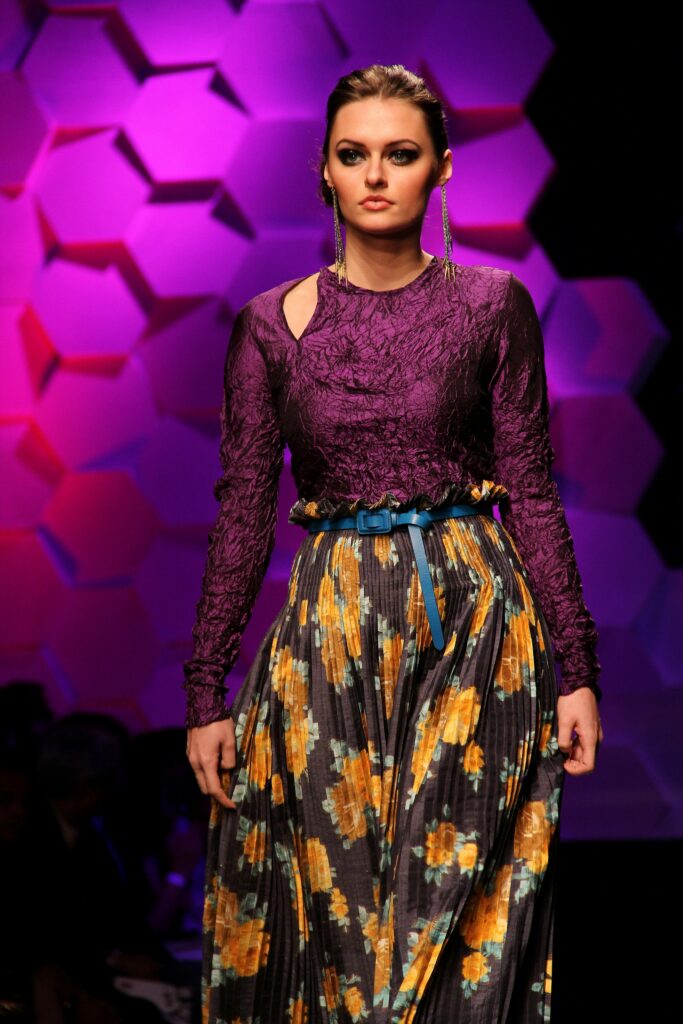Fashion design is not just about clothing; it’s about storytelling through fabric, color, and silhouette. From haute couture to ready-to-wear, designers weave their narratives into every stitch, creating pieces that inspire and captivate. In this comprehensive guide, we’ll explore the multifaceted realm of fashion design, delving into its history, processes, trends, and career opportunities. Whether you’re an aspiring designer or simply curious about the magic behind your favorite garments, join us on this journey through the enchanting world of fashion.
Unveiling the Essence of Fashion Design
Understanding the Fundamentals
Fashion design encompasses various elements, including sketching, pattern making, draping, and sewing. It requires a keen eye for detail, a strong sense of aesthetics, and the ability to translate concepts into tangible designs. By mastering these fundamentals, designers bring their visions to life, from initial sketches to runway showcases.
Exploring Historical Influences
Fashion has always been a reflection of society, mirroring cultural shifts, economic trends, and technological advancements. From ancient civilizations to modern-day couture houses, each era has left its mark on the evolution of style. By studying fashion history, designers gain insight into past trends and innovations, informing their creative process.
Embracing Innovation in Design
In today’s digital age, technology plays a pivotal role in fashion design, revolutionizing traditional practices and opening new avenues for experimentation. From 3D printing to digital pattern making software, designers harness the power of innovation to push boundaries and challenge conventions. By embracing technology, they stay ahead of the curve in an ever-evolving industry.
The Artistry Behind Fashion Design
Finding Inspiration
Inspiration can strike anywhere, from a bustling city street to a serene natural landscape. Fashion designers draw inspiration from diverse sources, including art, architecture, nature, and cultural heritage. By staying attuned to their surroundings and embracing curiosity, they infuse their designs with depth and originality.
Nurturing Creativity
Creativity is the lifeblood of fashion design, fueling imagination and innovation. Designers cultivate their creative prowess through experimentation, exploration, and continuous learning. By pushing beyond their comfort zones and embracing failure as a stepping stone to success, they unleash their full artistic potential.
Balancing Form and Function
Fashion design is a delicate balance between form and function, where aesthetics meet practicality. Designers must consider not only the visual impact of their creations but also their wearability, comfort, and functionality. By marrying style with substance, they ensure that their designs resonate with both the wearer and the observer.
Fashion Design: A Pathway to Expression
Cultivating Personal Style
Every designer has a unique voice, shaped by their experiences, influences, and aesthetic sensibilities. Cultivating personal style is a journey of self-discovery, where designers hone their signature aesthetic and carve out their niche in the industry. By staying true to themselves and embracing their individuality, they leave an indelible mark on the world of fashion.
Embracing Diversity and Inclusion
Fashion is a universal language that celebrates diversity and embraces inclusivity. Designers have the power to challenge stereotypes, break down barriers, and promote representation through their work. By championing diversity in their designs and casting models of all backgrounds, they contribute to a more inclusive and equitable fashion landscape.
Advocating for Sustainability
In an era of fast fashion and disposable consumption, sustainability has emerged as a pressing issue in the fashion industry. Designers play a crucial role in driving positive change by adopting eco-friendly practices, sourcing ethical materials, and prioritizing longevity over trends. By embracing sustainability, they pave the way for a more mindful and responsible approach to fashion.
FAQs (Frequently Asked Questions)
1. What is the role of a fashion designer?
Fashion designers conceptualize and create clothing and accessories, ranging from everyday wear to haute couture. They oversee the entire design process, from sketching initial ideas to overseeing production.
2. How do I become a fashion designer? To pursue a career in fashion design, you can enroll in a fashion design program at a reputable institution, gain hands-on experience through internships, and build a strong portfolio showcasing your creativity and technical skills.
3. What skills are essential for a fashion designer?
Key skills for fashion designers include drawing and sketching, sewing and pattern making, garment construction, trend forecasting, and a keen eye for detail and aesthetics.
4. What are some emerging trends in fashion design?
Emerging trends in fashion design include sustainable and eco-friendly practices, gender-neutral clothing, virtual fashion experiences, and a renewed focus on craftsmanship and artisanal techniques.
5. How can I stay updated on the latest fashion trends?
You can stay updated on the latest fashion trends by following fashion blogs, attending fashion shows and exhibitions, subscribing to fashion magazines, and engaging with the global fashion community on social media platforms.
6. What are some career opportunities in fashion design?
Career opportunities in fashion design include fashion designer, textile designer, fashion illustrator, pattern maker, fashion stylist, fashion merchandiser, and costume designer for film and theater productions.
Conclusion
Fashion design is a captivating blend of artistry, innovation, and storytelling, where creativity knows no bounds. From sketching initial concepts to bringing designs to life on the runway, designers wield their talent and passion to shape the future of fashion. By embracing diversity, sustainability, and inclusivity, they leave an enduring legacy that transcends trends and inspires generations to come.

